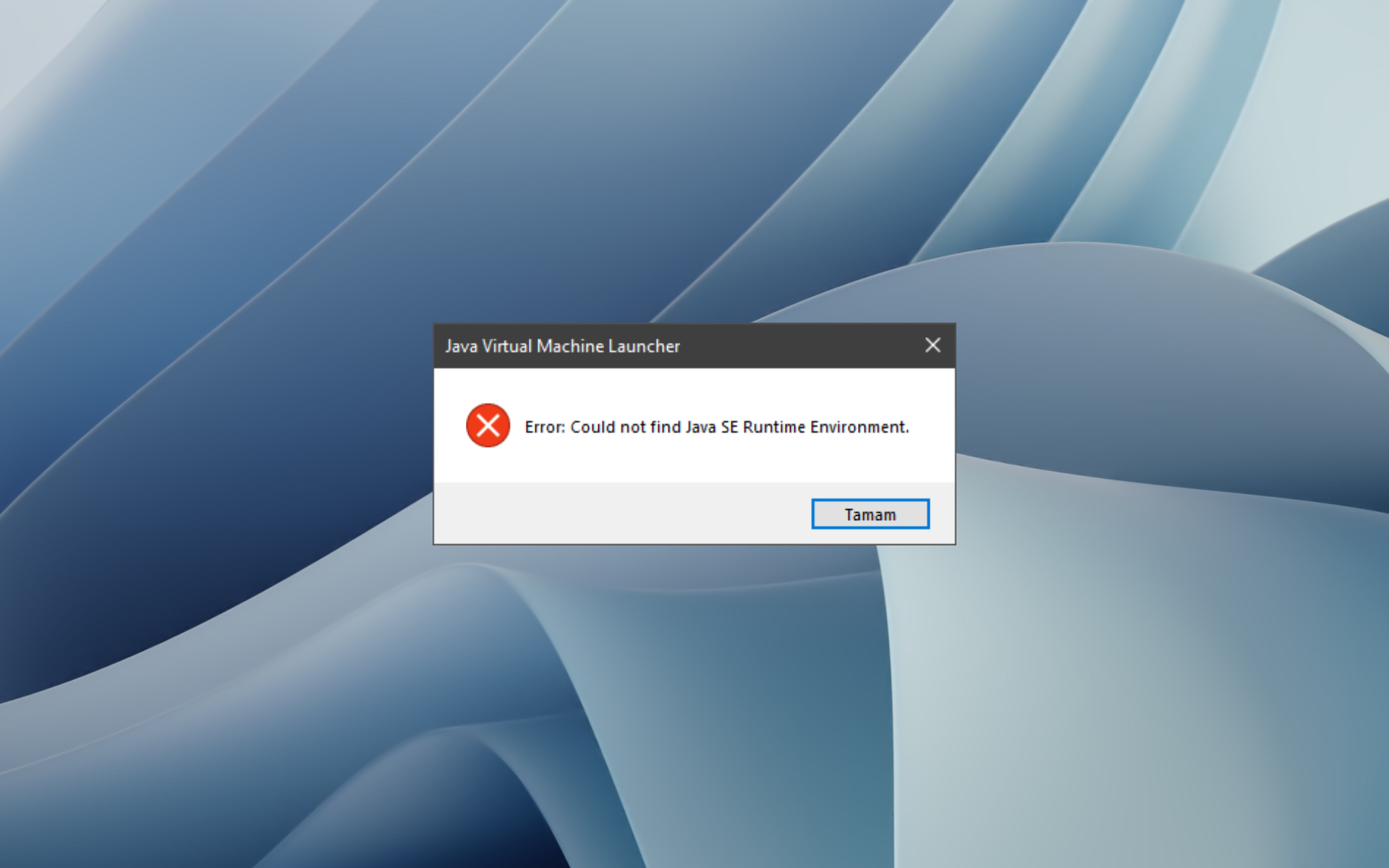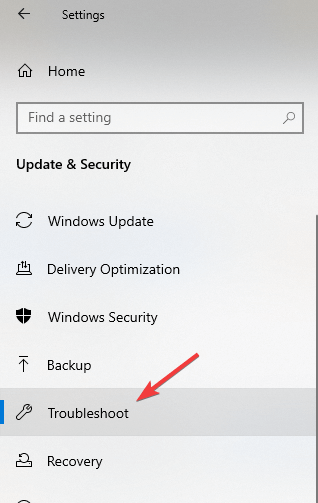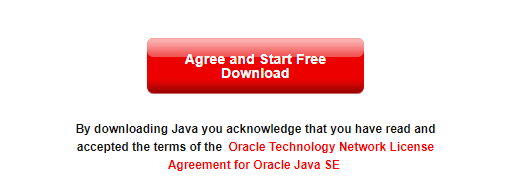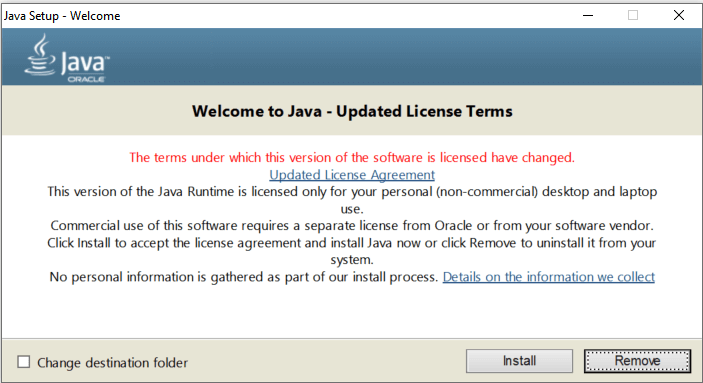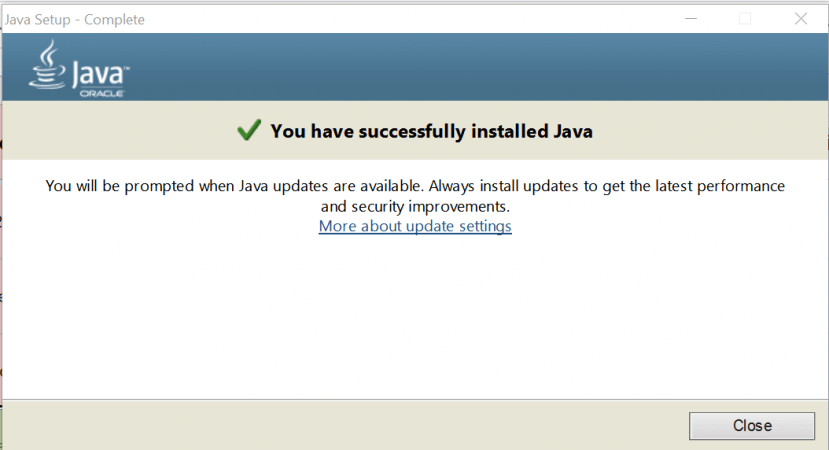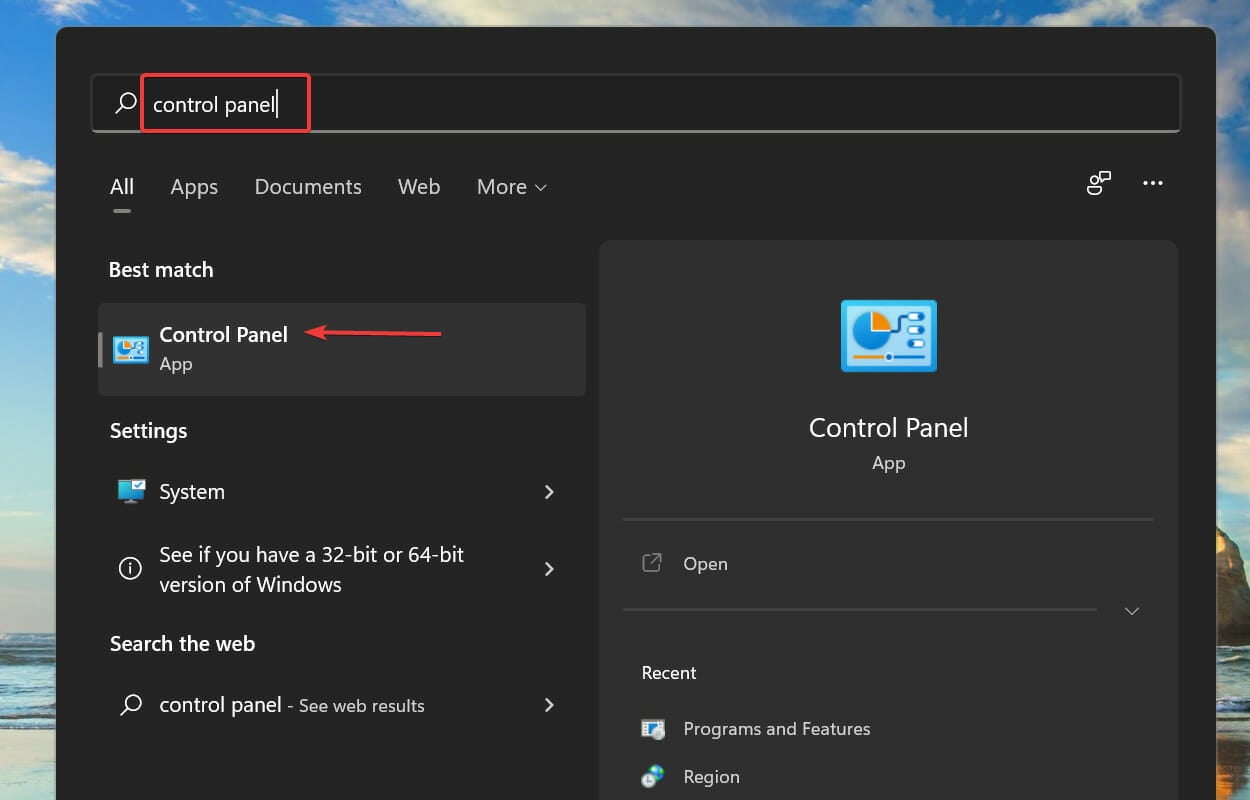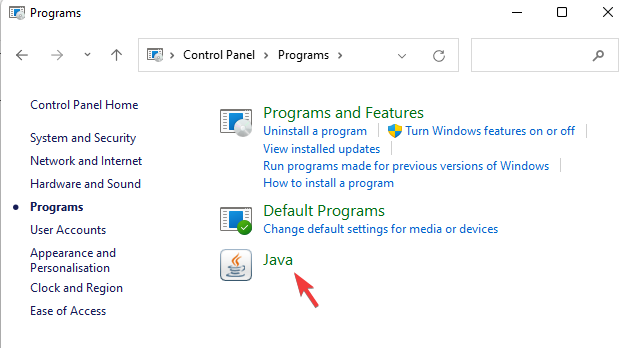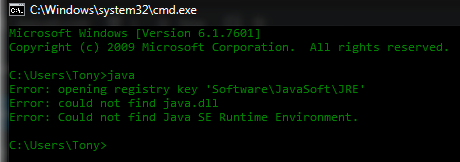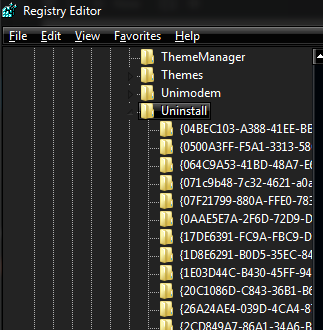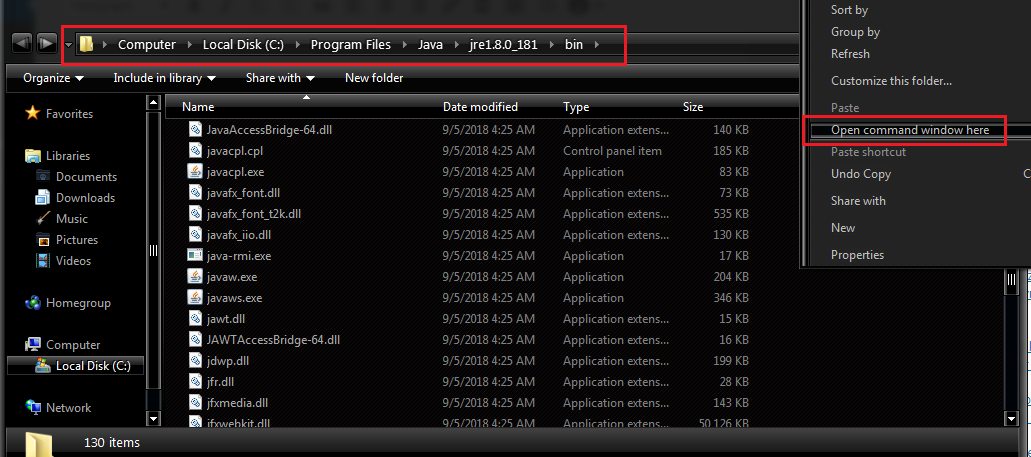In this post, we will solve the “Java Runtime Environment not found error”. This java error is one of the common errors faced by developers or end-users. Whenever you try to install any software which requires java like eclipse or Minecraft. Also, if you are new to java development, JDK or Java Development Kit is necessary for you.
Following this tutorial will help you to resolve all Java runtime errors. Additionally, you will learn to install, remove and set java variables in Windows10 and Ubuntu.
These are the very common errors you will find related to Java.
- java runtime environment not found
- java runtime environment not found windows 10
- eclipse java runtime environment not found
- eclipse java runtime environment not found path
- java SE runtime environment not found
- java runtime environment not found at bin javaw.exe
- unable to load java runtime environment
- cannot determine a valid java home
- java runtime environment not found mac
Let’s understand some basic concepts of Java runtime first. Check out this post, if you are getting a java command not found error.
What is a runtime environment?
Runtime basically means everything you require to run a program. Which includes environment variables, directory structure, common libraries etc. This can also be a virtual machine like
- JRE (Java Runtime Environment)
- CLR (Common Language Runtime) for .net framework
The target would be JRE or CLR for your program, need to decide by you. As soon as you execute any program, it’s in run time.
JRE vs JDK
| JRE | JDK |
|---|---|
| Stands for Java Runtime Environment | Stands for Java development kit |
| To run Java programs, you need JRE | Helps to build Java programs and applets |
| Platform dependent contains libraries and supporting tool | Platform dependent contains tools development and debugging |
| JRE does not contain a development kit. | JDK includes JRE also to execute the program |
What are the causes of the “Java Runtime environment not found” error
- Java is not installed in your system
- Java installation not completed (due to errors)
- Environment variables of Java are not set
- Java conflict due to more than one Java Runtime installation
Because JRE is platform-dependent, I have covered java installation, variable setup and un-installation for Windows and Ubuntu both.
Choose Windows 10 or Ubuntu 20.04 from the post and follow step by step to get java issues resolved.
Java download
Before installation, first, we need to download java –
Step1
Visit oracle.com and download JDK 15 or the latest available for your system. I am downloading it for Windows 10 (64-bit). The latest available versions of java are listed in the screenshot.
How to install Java runtime environment step by step
Let’s solve 1st reason for “Java runtime environment not found”, Because java is not installed.
Step2
First, check for any pre-installed java version –
Open the command prompt with “Run as administrator” and run java command.
C:\Users\admin> java --version

How to install java runtime environment in Windows 10
Step3
Once Download completes. Browse to the “jdk-15.0.1_windows-x64_bin.exe” file and double-click on it, to run the installer. Click Next.
Step4
I recommend keeping “C:\Program files\java\jdk-15.0.1 (64-bit)” as the default installation folder. Select Next.
You may select different installation folders also. For example, if you are installing a second instance of java software. Click on change and browse for the target folder.

Step5
Let installation complete, it may take a few minutes.

Step6
Click close. Now you are done with java installation on windows 10.

How to set the environment variable for java in windows10
Set the Environment variable for java in windows 10 by these steps –
Step7
Type “environment” in the search window. Click “open” on “Edit the system environment variables”

Step8
Click on Environment variables.

Step9
Select “Path” > Then click Edit.

Step10
Select New > Give path of java installation directory > For example, “C:\Program files\java\jdk-15.0.1\bin” in my case. If you have selected a different folder for java installation in step4. You can enter your path to the bin folder.
Click OK.

Step11
Set “classpath” for java. Click “New” in the environment variable window. It allows to set up the new environment variables.

Step12
In “Variable name”, enter “classpath“. Also in “variable value” provide path to your java installation till “lib” folder. In my case it is “C:\program files\java\jdk-15.0\lib > Select OK

Close all open environment variables windows by selecting OK.
How to check what version of java I have?
Installation and java variables have been set up. Now, Let’s validate the java installation and version.
Step13
Open the command prompt with “run as administrator” rights in windows 10.

Step14
Run the “java” command to check your Java and JRE (Java Runtime Environment) version.
java --version

Check java SDK version with javac command

Video tutorial-JRE error solved for Windows
“Java Runtime Environment not found” error fixed for windows 10
How to uninstall java from Windows 10
In case, you are not happy with your old java or JRE version and want to install a new. For that, you need to remove the old Java version.
Cleanup of Java from Windows 10 is pretty easy. Follow these steps to remove java from your system.
Step15
Search add or remove programs and click open

Step16
Select the java program and click Uninstall.

Java software will go from the window. You can clean up java variables also, set up in step10 and 11 earlier.
There are two ways to download and install java or JDK in Ubuntu 20.04
A.) Using the apt command
B.) Download the Oracle JDK package and install it manually
Let’s see both options one by one-
A.) How to install java or JRE in Ubuntu 20.04 using the apt command
To install Java in Ubuntu using the repository, Follow these commands
Step17
Update package index using apt command
$ sudo apt update

Step18
Check if you have any old java versions installed in the system. In my case, java is not installed.
$ sudo java -version
output
Command ‘java’ not found, but can be installed with:
sudo apt install openjdk-11-jre-headless # version 11.0.9.1+1-0ubuntu1~20.04, or
sudo apt install default-jre # version 2:1.11-72
———————-output-truncated————————————
Step19
Run the “apt” command to install java or JRE. I will install default-jre version 2:1.11-72 in my Ubuntu system from the list.
$ sudo apt install default-jre

Select “Y” and press Enter. Let installation complete. it will take a few minutes.
Step20
Check the java version
$ sudo java -version
output

How to Remove java from Ubuntu 20.04
Step21
Run apt command to remove JRE package installed. Press Y and then enter.
$ sudo apt autoremove "JRE package name"
B.) How to install the latest java or JDK in Ubuntu 20.04 from oracle (manually)
Step22
Java JRE download steps –
Visit oracle.com and download JDK 15 or the latest available .deb and transfer to your system. I am downloading Debian package jdk-15.0.1_linux-x64_bin.deb.
Alternatively, you can download java using wget command.
$ sudo wget "download link"
Reference output
Step23
Rename the .deb file using mv command, if required. Then install the Debian package using the dpkg command.
Learn more ways to install .deb package.
$ sudo dpkg -i ".deb-file-path"
output
Default installation directory path of java would be “/usr/lib/jvm/jdk-15.0.1/“. So, make a note of it, as it will be required to set up a Java_HOME variable.
How to set the “JAVA_HOME” variable in Ubuntu 20.04
Set the JAVA_HOME variable for all users in Ubuntu by editing the environment file.
Step24
Edit /system/environment file
$ sudo vi /etc/environment
Add path “/usr/lib/jvm/jdk-15.0.1/bin” to the last of the environment file. Then, save and exit.

Run source command to execute changes made in the environment file.
$ sudo source /etc/environment
Step25
Check your java version
$ sudo java -version

Remove java runtime environment package using dpkg command
Step26
Run the dpkg command with the –purge option to completely clean java from Ubuntu 20.04
$ sudo dpkg --purge "package-name"
For example,
$ sudo dpkg --purge jdk-15.0.1
Video Tutorial – JRE error solved for Ubuntu
Video on “How to fix java runtime environment error in Ubuntu 20.04”
Frequently Asked Questions (FAQs)
Where is the java runtime environment on Windows 10?
The default installation folder for java runtime is “C:\Program files\java\jdk-15.0.1\bin” in the case of windows 10.
What does Java Runtime Environment do?
Java Runtime Environment (JRE) helps to run java programs like the eclipse.
What is the java runtime environment used for?
Java runtime environment helps to run java programs like Tomcat, eclipse and Jenkins.
What is the java runtime environment?
Java runtime environment JRE is a software that runs on the operating system. Which provides class libraries and resources to run java programs.
How to set the java runtime environment in windows 10?
Type “environment” in the search window. Click “open” on “Edit the system environment variables“
Click on Environment variables.
Select “Path” > Then click Edit.
Select New > Give path of java installation directory > For example, “C:\Program files\java\jdk-15.0.1\bin“
Click OK
Ending notes
I hope after reading this article, you will be able to solve the “Java Runtime Environment not found error”. Because majorly reasons for java related errors are, either Java is not installed or the java variable is not set.
if you still have issues, please comment and let me know, I will try to help you.
Try these fixes to resolve Java Runtime Environment not found error
by Vlad Turiceanu
Passionate about technology, Windows, and everything that has a power button, he spent most of his time developing new skills and learning more about the tech world. Coming… read more
Updated on
- A Java Runtime error might appear if you have installed an older JRE software.
- If you have wondered how to fix Java issues, reinstalling it can help you.
- To fix the Java Runtime Environment not found error, make sure to have the latest version of Java.
- Download the JRE version that corresponds with your system type so you won’t deal with other types of Java issues.
The Java Development Kit (JDK), the Java Virtual Machine (JVM), and the Java Runtime Environment (JRE) form a trio of Java platform components for developing and running Java apps.
A runtime environment is a piece of software designed to run other software. For example, as the runtime environment for Java, the JRE contains the Java class libraries, the Java class loader, and the JVM.
So if you don’t have JRE installed or you have an older version of the software, you might encounter one of the following messages:
- Error: Could not find Java SE Runtime Environment – you don’t have the Java SE version installed on your system
- This application needs version 1.x or higher of the Java Runtime Environment – you should update your Java version to the latest you can find on the official website
- A Java Runtime Environment(JRE) or Java Development Kit (JDK) must be available to run this app – like the first error, check if you have installed JRE or JDK and if not, install them
Today’s guide will explore the most efficient and easy methods to resolve the Java Runtime Environment not found and the other similar errors with Java. Read on for more details.
Why is JRE not installed?
In Windows and macOS, installing the Java Developmental Kit (JDK) in previous releases optionally installed a Java Runtime Environment (JRE).
However, with JDK 11, Oracle removed JRE to be installed optionally. Therefore, with JDK 11 release, the JRE or Server JRE is no longer offered, and only the JDK is provided.
Also, the Java Runtime Environment not found it could be caused by several other reasons, which we have listed below.
- Java is not installed on your PC.
- Java installation was not completed due to some errors.
- The environment variables of Java are not set.
- You might have more than one Java Runtime installation.
- A Windows misconfiguration can also trigger this problem.
How do I fix the Java runtime environment not found?
1. Run Windows troubleshooter
- Select Start, and click on Settings.
- Choose Update & Security, and then click Troubleshoot.
- Select the type of troubleshooting you want to run, then select Run the troubleshooter.
- Allow the troubleshooter to run and then answer any questions on the screen.
You can try the recovery options if you see a message that no changes or updates are necessary. This is a built-in troubleshooter tool from Windows 10.
2. Download Java Runtime Environment (JRE)
- Download JRE from the official website.
- Choose if you need a 32bit or a 64bit architecture of JRE based on your PC specifications.
- Click on the Agree and download button to start the actual download.
If you don’t know which version of Java is the correct version for your system, you can find out by searching in the Start menu the term System Information.
It would be best if you opened the first option that appears after the search and then checked the value under System Type (32-bit or 64-bit).
- Could not create the Java virtual machine [Fixed]
- What is Microsoft Coffee and is it real or not?
3. Install Java Runtime Environment (JRE)
- Right-click on the downloaded JRE setup file.
- Select Run as administrator and accept the installation prompt.
- Click on the Install button to complete the installation.
- You will receive a message that the installation was successful. Next, click on close the complete the installation and close the window.
We recommend you check if there is a new Java update each time you encounter this issue. Unfortunately, the software will not update automatically, so you must perform this task manually.
How can I fix Java Runtime Environment not found on Windows 11?
The above solutions also work perfectly well for Windows 11 PC. So, to summarize the answers, here’s what you can do to fix the Java Runtime Environment not found on Windows 11.
- Uninstall all Java versions from your PC and install the latest one from the official website.
- Configure the Environment Variables for Java on your PC.
- Reset your PC.
- Check for viruses or malware.
Where is JRE located?
- Open the Start menu.
- Click on Control Panel.
- Select Java.
- Switch to the Java tab.
- Click View.
- Check the Path column for the version of the JRE you have installed.
- You will see a path. For example
C:\apps\jdk\jre\bin\javaw.exe - So, the path is
C:\apps\jdk\bin
That is it. You should now have the latest version of Java Runtime Environment on your PC and no longer receive the error message.
Please write us in a comment below if these solutions helped you or if there are any other suggestions that we should include in our article.
I was getting the same error (below) for Oracle when I clicked on a G2 application.
Error: opening registry key ‘Software\JavaSoft\Java Runtime Environment’
Error: could not find java.dll
Error: Could not find Java SE Runtime Environment.
I restarted the machine, still the same.
I reinstalled the app (which includes Oracle), still the same.
I checked all the suggested registry settings as suggested and my registry was fine.
I checked the shortcut path and it fires up javaw.exe with a string following within the shortcut. I navigated to the G2 program files and I tried clicking in the javaw.exe directly within the application folder and got the same error.
I did some research into this and found that Java has a Javaw.exe within the following path:
C:\Program Files\Java\jre7\bin\javaw.exe
I navigated to the path and clicked on this javaw.exe file and didn’t get any errors
I renamed the javaw.exe in the G2 app to javaw_old.exe and then copied and pasted the javaw.exe file from the above path into my app folder. Files side by side, you could see a file size difference and the date was 8 months difference. The newer and larger file being the one in the latest Java install folder.
Clicked on the G2 shortcut and the application opened without any errors.
If you have the same issue as me where everything Java is okay and your still getting the error, try find the java(.exe) file that your app is erroring on, rename it and copy and paste the same file from your Java folder (C:\Program Files\Java\jre7\bin) to the same folder your app’s Java file is located.
I hope this helps someone.
Java Runtime Environment, or JRE is a piece of software that provides the necessary functions and system resources for a typical Java program to run. It is widely used in developing and distributing Java programs.
When you try to run a software written in Java without setting up the JRE correctly before that, the error “Java Runtime Environment not found” error would pop up. The error message basically means that you have not installed JRE on your computer, or in case you did, the system can’t find it. It’s also possible that the application which is being installed is not compatible with the Windows operating system or the application has a problem.
In this article, we will show you how to fix the “Java Runtime Environment not found” error on Windows and Ubuntu.
JRE not found solution: Add JAVA_HOME environment variable
Java Runtime Environment relies on an environment variable named JAVA_HOME in otder to locate where to find resources for programs written in Java. In many cases, a corrupt JRE setup or Windows misconfiguration may cause the JAVA_HOME variable to be deleted, hence the system cannot find JRE when needed.
Before proceeding, please verify whether you actually have Java installed or not by opening C:Program FilesJava and look for a folder called jre6, jre7 or jreX with X being a version number. If it’s there and the folder has files inside it, then JRE is installed. Remember the installation path of JRE as we will need it later.
In order to add JAVA_HOME back to the list of environment variables, follow the instructions below.
-
First, on the Desktop, right-click in My Computer (This PC) icon, then select Properties > Advanced system settings on the left side.
-
In the new System Properties, select Advanced tab, then click on Environment Variables button to open up the list of all environment variables.
-
In the Environment Variables pop-up, select New.. in System Variables section to create a new system-wide environment variable. Input JAVA_HOME in the Variable name box and C:Program FilesJavajre7bin to Variable value box. Remember to replace the value in Variable value box with the one in your specific computer, otherwise it won’t work correctly.
Fix JRE not found: Reinstall JRE
There are numerous people who has faced the same problem, and a smart guy named appleoddity from WhatTheTech came up with an automated script that fixes these kind of problem once and for all. Follow the instruction below if the solution above does not work for you.
- Completely uninstall every single Java installation from your computer. By Java, I mean both the JRE and JDK. You can use the built-in Programs and Features on Windows or any third party utility (no need for a paid program though).
- Download fixjava.bat from this page and run it. If you are using Windows Vista or Windows 7, 8, 10, you must right-click on the file and select Run As Administrator.
- Once the installation has done, download a fresh Java Runtime Environment installer to your computer and reinstall it. Notice that you have to select the correct 32-bit or 64-bit version that matches your system architecture.
Install JRE on Ubuntu
Installing Java in Linux should be easy using package managers, such as apt, yum, or pacman, depending on your Linux distribution. However, there are times that you may encounter “java: command not found” error, even though you think you have installed it. We have covered this problem before, if you’re encountering it, check out our guide on How to fix “java command not found”.
We hope that the information above is useful to you and helped you fix Java Runtime Environment not found error. We usually don’t write about Java programming, but we have covered how to convert JSONObject to String that may be helpful to Java beginners.
If you’re seeing a “not found” error, you may want to check out our other guides to similar error messages with curl, AWS CLI.
If you have any questions, then please feel free to ask in the comments below.
When trying to open a Java .jar file through the command prompt, such as using the command “Java -Jar xxxx.jar”, you might encounter the following error message:
Error: opening registry key ‘Software\JavaSoft\JRE’ Error: could not find java.dll Error: Could not find Java SE Runtime Environment.
This could be due to several factors, including but not limited to:
- Corrupted registry
- Missing Java path in your Environment Variables
- Java installation folder being moved
For example, we encountered this issue when updating Java SE to the latest version – we likely previously had a 32-bit Java installation, and when running the 64-bit Java installer, our Java path changed.
Luckily, this is fairly easy to fix, as it just requires addressing one of the above problems with the appropriate solution. Follow our steps below to get your Java commands via command prompt working again, and leave a comment in the comments section if you encounter any further issues (or know of a better solution).
- Delete all previous versions of Java (using “Programs and Features” uninstall process). If java folder is remains in “C:/Program Files/…”, please delete it.
- Clean up your registry (delete your java key):
- Go to Start and then Run
- Type in ‘regedit’ in the edit field
- Go to HKEY_LOCAL_MACHINE/Software/Microsoft/Windows/CurrentVersion/Uninstall
- Under this Uninstall folder you will find many registry entries within curly brackets.
Regedit uninstall pathway. - Click on Edit tab and then Find
- Note: Highlight Uninstall folder before performing search for particular registry.
- Enter version string as value to find corresponding registry entry to be deleted.
- Once you find registry key, highlight that key and then Right click on it and choose Delete
- Confirm the delete and click Yes
Steps for finding registry keys for any version of Java 7
Follow format 7.0.xxx
where xxx can be 100, 120, 130, 140 and so on.
for example:
- Type 7.0.100 in search field, finds registry key for Java7 update 10
- Type 7.0.120 in search field, finds registry key for Java7 update 12
- Type 7.0.180 in search field, finds registry key for Java7 update 18
Steps for finding registry keys for any version of Java 6
Follow format 6.0.xxx
where xxx can be 100, 120, 130, 140 and so on.
for example:
- Type 6.0.100 in search field, finds registry key for Java6 update 10
- Type 6.0.120 in search field, finds registry key for Java6 update 12
- Type 6.0.180 in search field, finds registry key for Java6 update 18
Steps for finding registry keys for any version of Java 1.5
Follow format 1.5.0.xxx
where xxx can be 100, 120, 130, 140 and so on.
for example:
- Type 1.5.0.100 in search field, finds registry key for jre1.5.0_01
- Type 1.5.0.120 in search field, finds registry key for jre1.5.0_12
- Type 1.5.0.180 in search field, finds registry key for jre1.5.0_18
- Steps for finding registry keys for any version of Java 1.4
Follow format 1.4.2_xxx
where xxx can be 01, 12, 13, 14 and so on.
for example:
- Type 1.4.2_01 in search field, finds registry key for jre1.4.0_01
- Type 1.4.2_12 in search field, finds registry key for jre1.4.0_12
- Type 1.4.2_18 in search field, finds registry key for jre1.4.0_18
Reinstall Java and set system variable JAVA_HOME to your JRE (or JDK) path.
Eg:
JAVA_HOME - C:\Program Files\Java\jdk1.7.0_71 Path - C:\Program Files\Java\jdk1.7.0_71\bin
You can check if this was a successful solution with the following commands
echo %JAVA_HOME% java -version
Manually open command window to Java pathway.As a side note, you can also launch a command prompt directly from within the Java folder – navigate to your C:\Program Files\Java\bin folder (or wherever your Java is installed), hold Shift + Right click inside the window, and click “Open a command window here”.
Kamil Anwar
Kamil is a certified MCITP, CCNA (W), CCNA (S) and a former British Computer Society Member with over 9 years of experience Configuring, Deploying and Managing Switches, Firewalls and Domain Controllers also an old-school still active on FreeNode.








